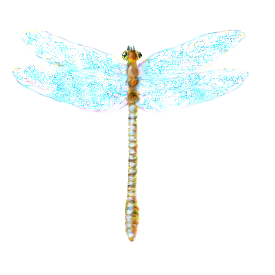Faeyorite Dragonfly
From Wikimalia
(Difference between revisions)
| (One intermediate revision not shown.) | |||
| Line 2: | Line 2: | ||
|image=Faeyorite Dragonfly.png | |image=Faeyorite Dragonfly.png | ||
|name=Faeyorite Dragonfly | |name=Faeyorite Dragonfly | ||
| - | |habitat= | + | |habitat=Inland swamps of temperate zones. |
| - | |description= | + | |description=A wide flattened head tops a slender body on this winged insect. Its tail segment is significantly longer than most dragonflies, and the posterior end of the tail, while flat, is broad. The coloration is an amber speckled with red, reminiscent of the hues of flawed faeyorite. Its twin sets of wings are rounded, and angled noticeably forward. Six very short legs support the body, and end in flattened disks that allow the insect to light on water without sinking. Mandibles are formed of six sharp polyps just below the side-mounted eyes. Nearly five [[Measurements|thum]]s in length, the faeyorite dragonfly is one of the largest of its kind on record. |
| - | | | + | |notes=Their diet consists of many aquatic life forms, but the mainstays include insect larvae, tadpoles, fish eggs, young fish and even the occasional immature crustacean. During winter, it is suspected that they create burrows for their eggs clutches, although their behavior of continually dipping their flattened tails into water had led to speculation that their offspring, like mosquitoes, spend their larval lives in the water. |
| - | |notes= | + | |
}} | }} | ||
| + | Oddly, there seems to be little distinction between males and females. All specimens observed have had characteristics of both, making them true hermaphrodites, although no proof exists that they can self-fertilize. This fertility, a domain of [[Religion|Faeyora]], is likely how their named was derived. | ||
{{stub}} | {{stub}} | ||
Back to the [[Insect/Arachnid]] page. | Back to the [[Insect/Arachnid]] page. | ||
Current revision
| The Bug Collection | ||||||||
|---|---|---|---|---|---|---|---|---|
|
| ||||||||
| ||||||||
Oddly, there seems to be little distinction between males and females. All specimens observed have had characteristics of both, making them true hermaphrodites, although no proof exists that they can self-fertilize. This fertility, a domain of Faeyora, is likely how their named was derived.
This article is a stub. You can help Wikimalia by expanding it.
Back to the Insect/Arachnid page.

